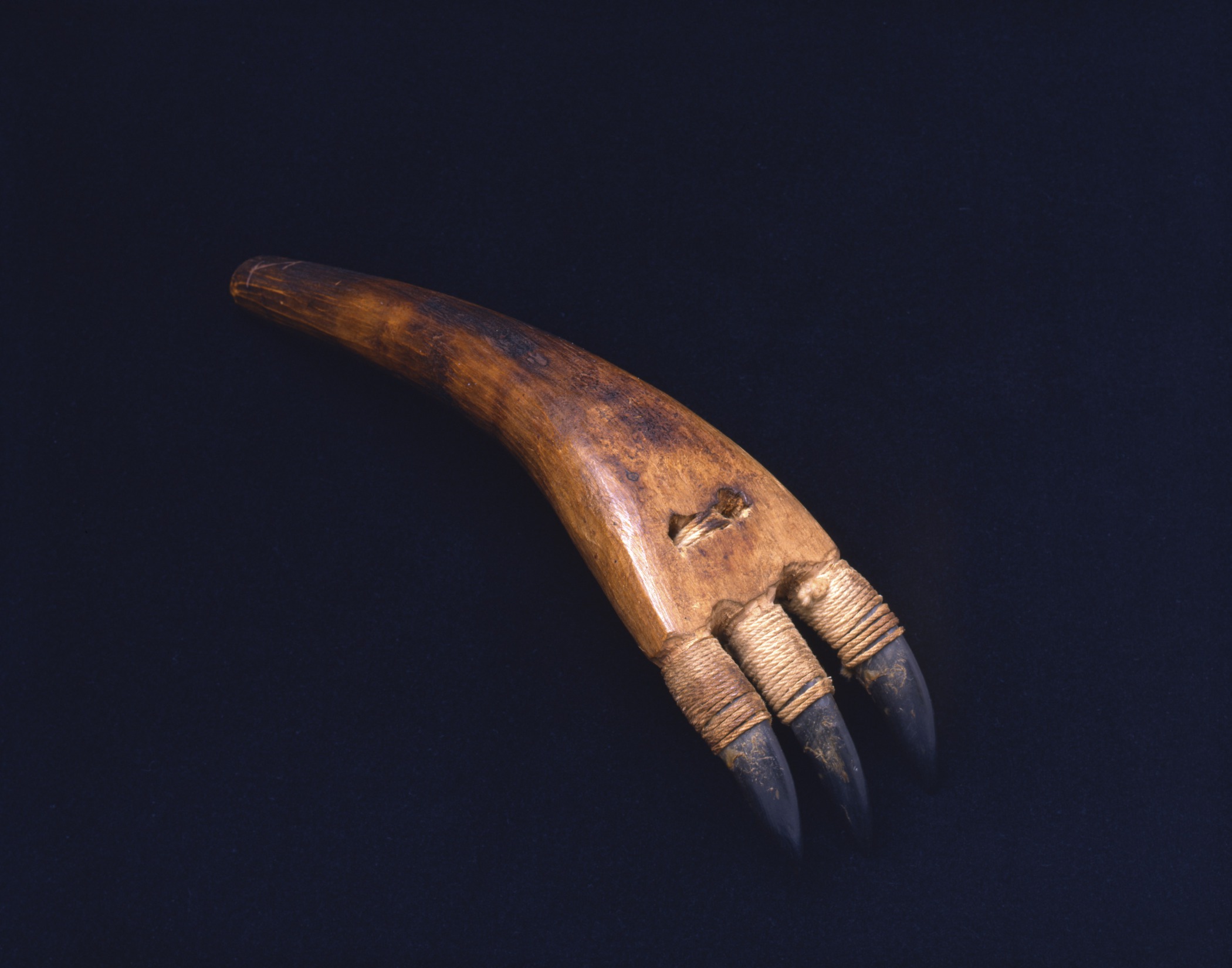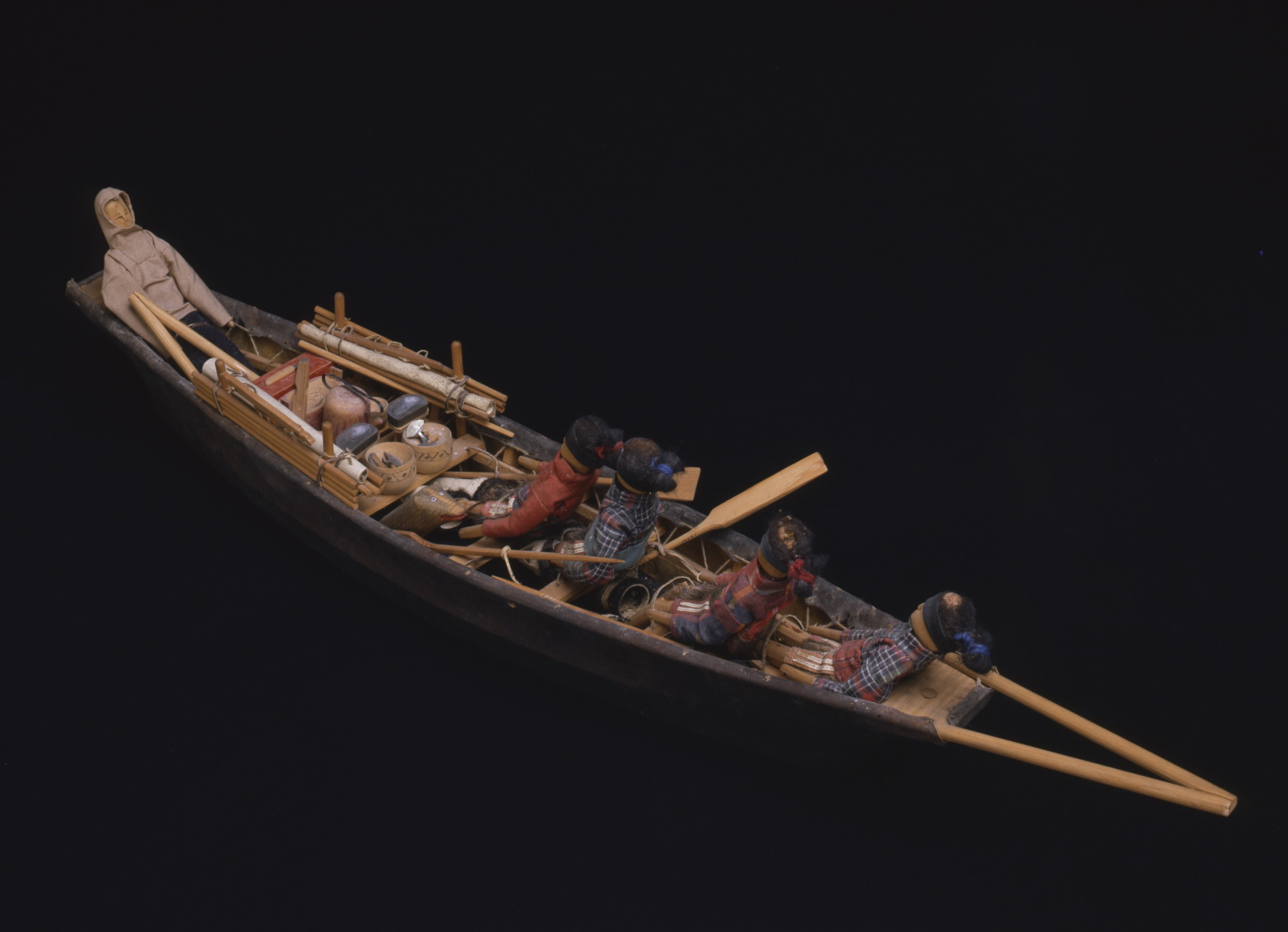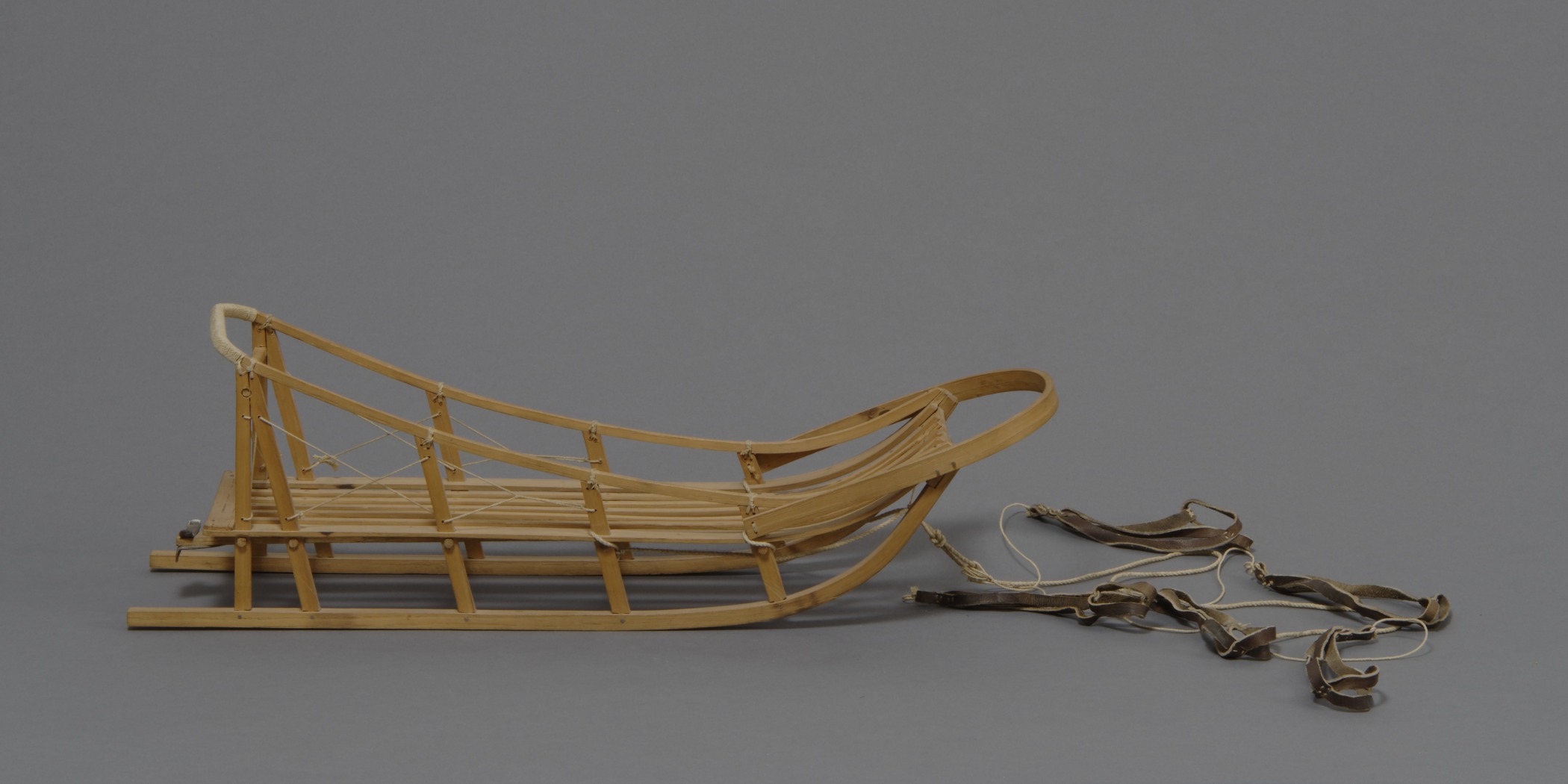Edward Kayoukluk, American (Iñupiaq), born 1917
Model dogsled
- Collected 1948–49
- Wood and rawhide
- 18 × 14 × 5 1/2 in.
Hood Museum of Art, Dartmouth College: Gift of Sally Carrighar; 166.43.16126
visibilityLook & DiscussDogs are extremely important in the Arctic. They have been employed as hunting companions and beasts of burden for up to 4,000 years. Harnessed to sleds, they can transport supplies and carry hunters in search of game over long distances. Although snowmobiles, referred to as snow machines in the North, are often used for transportation today, dog sleds continue to offer certain advantages. A smart dog can smell seawater from a distance, revealing dangerous cracks in the ice or helping to find seals’ inconspicuous breathing holes. They can also deter polar bears.
Edward Kayoukluk created this beautiful model of a dogsled for visiting naturalist and writer Sally Carrighar in 1958. Like other indigenous artists making models for trade, Kayoukluk insisted on creating a model worthy of his heritage, with accuracy and exquisite craftsmanship.
In her 1958 book Moonlight at Midday, Sally Carrighar shared this story:
Sometimes toy sleds are made for sale, beautiful little authentic models. I wanted one and was directed to Edward Kayoukluk, whose luck at hunting had been poor recently, so that he needed money. He would not make the toy, however, until he could get some oak. When I suggested that any wood could be used for this fourteen-inch model, he seemed shocked, as if I had proposed a dishonest thing. After several weeks he found a bit of oak, and the sled, complete with harnesses for a miniature dog team, was delivered, I asked Edward the price. He would not name it, and I said, “As a figure to start with, we might say ten dollars, but I know it is not enough.” Edward said, “It is too much. I would not take more than seven dollars and fifty cents” (82–83).
explore the object
George Twok Aden Ahgupuk, American (Iñupiaq), 1911–2001, Untitled (Dog Team and Sled), 1950s. Graphite on bleached sealskin, 4 15/16 × 7 in. Hood Museum of Art, Dartmouth College: Bequest of Evelyn Stefansson Nef; 2014.17.6.
This image by Iñupiaq artist George Twok Aden Ahgupuk (AH-guh-puk), drawn on a stretched piece of sealskin, shows a similar dogsled with a team of five dogs: two sets of pairs and one dog out front. The hunter stands on the runners in the back and urges his dogs on with a dog lead. Supplies or small children could be carried on the bed of the sled, covered with a piece of animal hide lashed in place. This cover could double as a tent on overnight journeys. Sleds with teams of five or more dogs could carry as much as 800 pounds!
Iñupiaq sleds were usually made of long, thin pieces of driftwood, steamed and bent into a shape that curved at the front. The runners were covered in bone to increase durability and decrease friction.
activity: Comparing dogsleds
Every culture in the Arctic has its own style of dogsled. Compare the following dogsleds created by Inuit and Kalaallit makers with the Iñupiaq sled you just explored.
Canadian (Inuit), model sled, collected 1929–30. Wood, fur, leather, and thread, 3/4 × 1 9/16 × 6 15/16 in. Hood Museum of Art, Dartmouth College: Gift of Robert O. Fernald, Class of 1936; 158.25.14218.
Kalaallit (West Greenlandic Inuit), souvenir model dogsled and team, about 1897. Wood, fur, sealskin, ivory (probably walrus), and commercial thread, 2 3/4 × 3 7/16 × 17 7/8 in. Hood Museum of Art, Dartmouth College: Gift of Mrs. William Stickney, Class of 1900W; 164.21.15445.
How are they the same? How are they different?
Traditional Canadian Inuit sleds consist of a platform built over two wooden runners, curved at the front. Inuit dogsleds employed driftwood, reindeer hide, sinew, and even frozen salmon skin in areas where wood was not available. This model is missing its dog lines, but includes a number of pieces of hunting equipment under a lashed piece of fur.
The Kalaallit model is made of ivory, although a real sled would have been made of wood. It shows the traditional Kalaallit method of tethering dogs in a fan shape rather than in pairs on a line. This sled is shorter than the other sleds and has handlebars. It may be a type of small hand sled that could be pulled by dogs but also could be pushed and pulled by men or women during hard times, when food was scarce and dogs could not be fed. In that case, one person pulled the sled using lines that went around his or her shoulders, while a second person pushed from behind.
Learn More
Inuit art historian Heather Igloliorte describes the Inuit sled above in this video.




